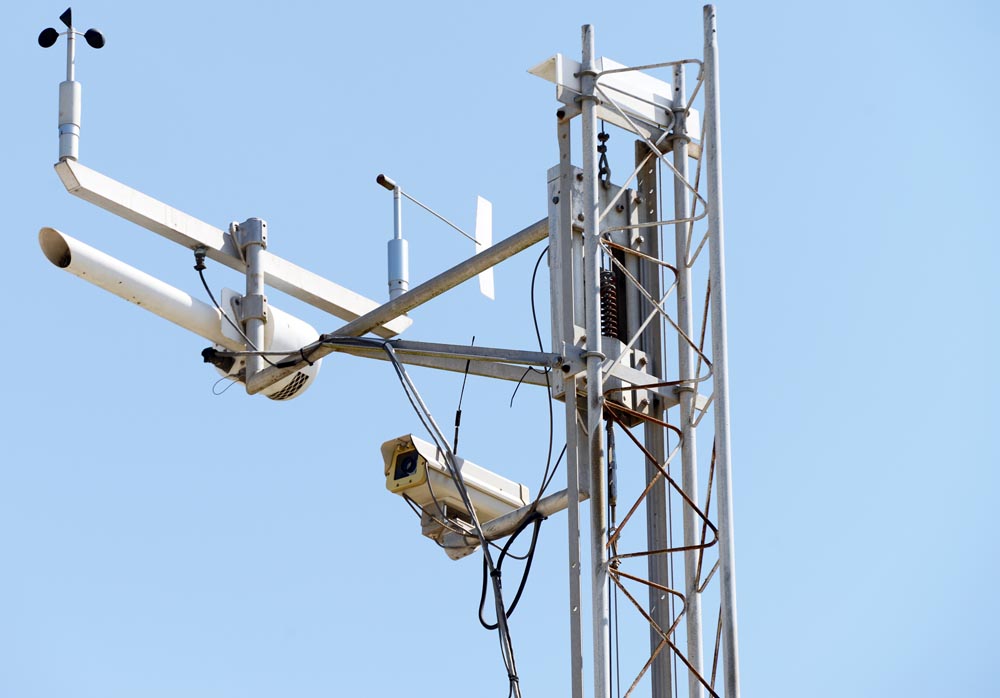The loss last year of the Rio Grande Valley’s billion-dollar sugar cane industry is a major blow to our local economy. Some people might have thought that if anything positive could come from it, freedom from the soot that cane field burns produced meant we no longer would have to worry about dirty air.
Think again.
Cameron and Hidalgo were among 12 counties that exceeded federal air pollution standards in a recent report. That might surprise many Valley residents — after all, this region’s air traditionally has been considered clean enough to allow trash burns in some unincorporated areas.
 Trash burns in the distance at a property is littered with items at a colonia north of Donna on March 20, 2014. (Delcia Lopez | dlopez@themonitor.com)
Trash burns in the distance at a property is littered with items at a colonia north of Donna on March 20, 2014. (Delcia Lopez | dlopez@themonitor.com)The report should remind local officials of the need to consider air quality in economic planning models.
The Texas Commission on Environmental Quality last month reported that the Valley’s two largest counties, along with 10 others across the state, had exceeded federal standards for particulate matter — most soot or smog. They weren’t high enough to require corrective action, but we shouldn’t ignore the report.
It reviews data from 2021-2023, and would still include cane field burns that, on windy days, could drop ash and soot into the heart of McAllen. More elements were listed in the report, and they continue to raise periodic risks to the Valley’s air quality.
They include international emissions including wildfires and agricultural burns in Mexico and as far away as Central America. Indeed, fires occasionally erupt at landfills right across the border including Matamoros and Reynosa, as scroungers seek to burn off trash and make it easier to find metals they can sell. Southerly winds can blow smoke from those fires north of the border.
Those conditions aren’t likely to go away, and officials should consider them along with other environmental risks as they look to diversity the area’s economy and attract new investment into the area.
Those plans have included more industrial development at the McAllen free trade zones and expansion or new construction at or near the Port of Brownsville that could include a metal smelting plant.
 A view of a Texas Commission On Environmental Quality air monitoring station in Brownsville. (Miguel Roberts/The Brownsville Herald)
A view of a Texas Commission On Environmental Quality air monitoring station in Brownsville. (Miguel Roberts/The Brownsville Herald)Any such development already requires environmental impact studies. The presence of sensitive environmental habitat and the popularity of wildlife-based and ecological tourist sites can amplify the concerns of industrial development of any kind in the region.
It is incumbent on officials, therefore, to mitigate those concerns by reminding potential business developers of the concerns, and the need to be as transparent as possible during development, construction and operation of any industrial business. Public hearings and the need to address public concerns are more than a mere nuisance here, but also way to build trust and goodwill in an area on which they will depend for workers, customers and public support.
Agriculture remains a big part of the Valley’s economy, and residents are sensitive to issues that could affect our land and air. Instability regarding environmental issues, from changing weather patterns to concerns about water availability, make diversification a necessity. But it needs to include our full attention to environmental conditions and concerns.
The post Editorial: Report highlights need to consider environment in economic development appeared first on MyRGV.com.
 (2).png)
 1 day ago
44
1 day ago
44







 English (US)
English (US)